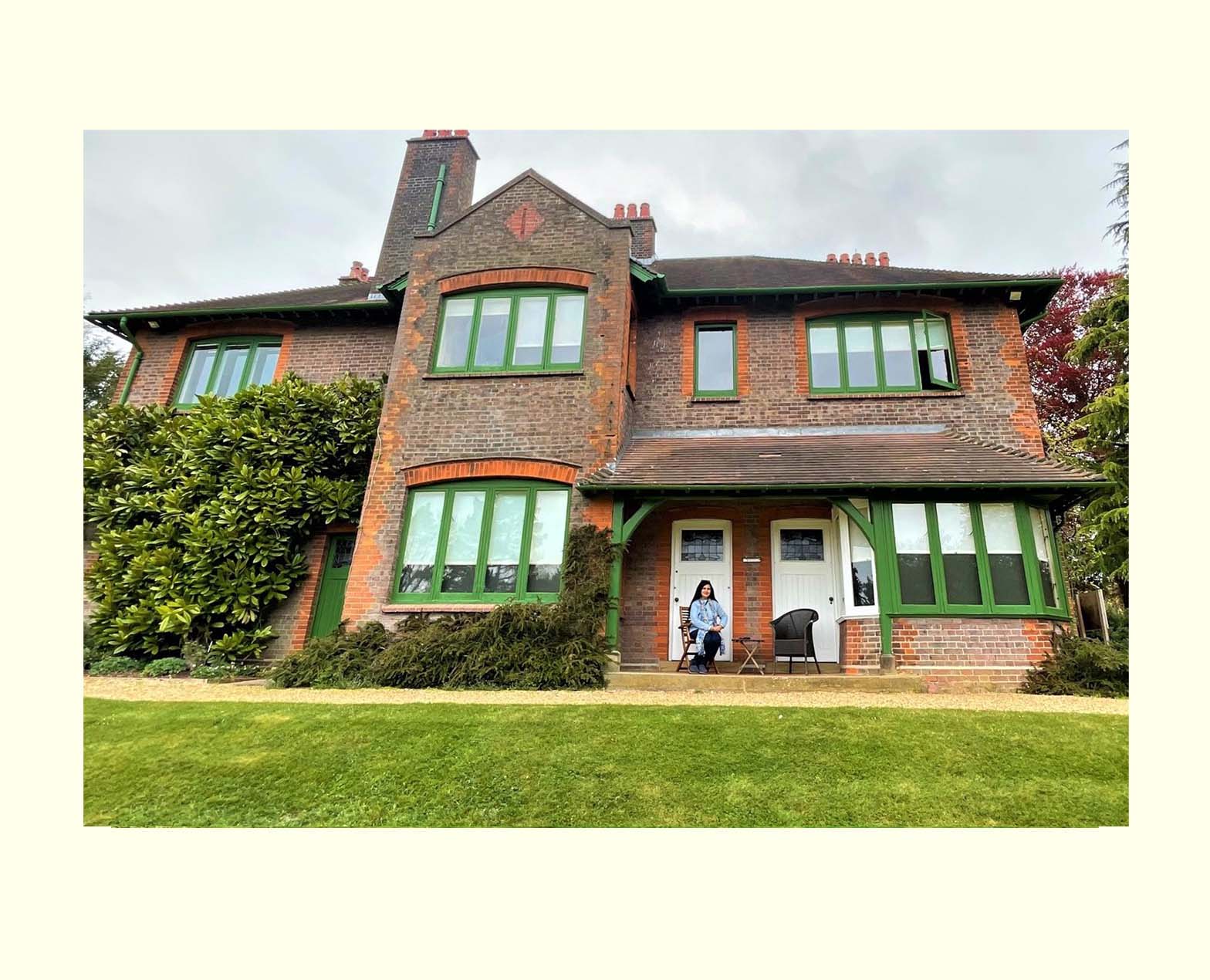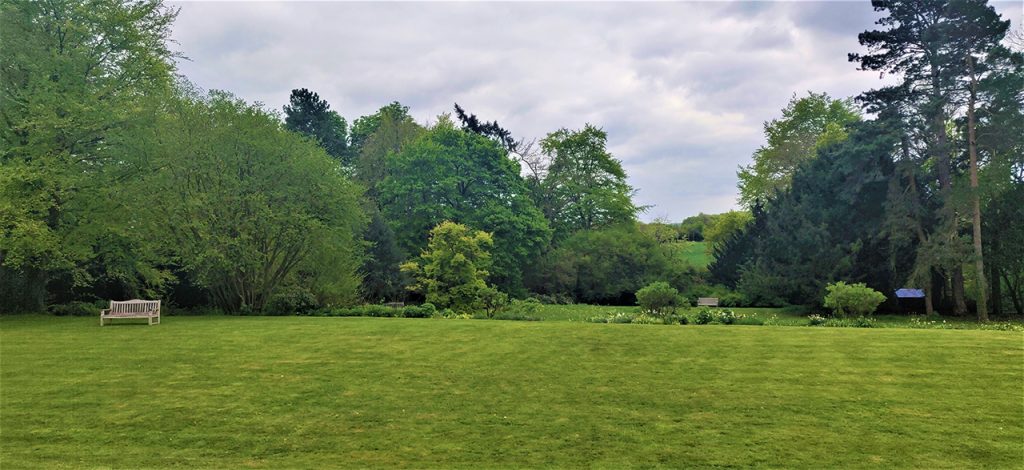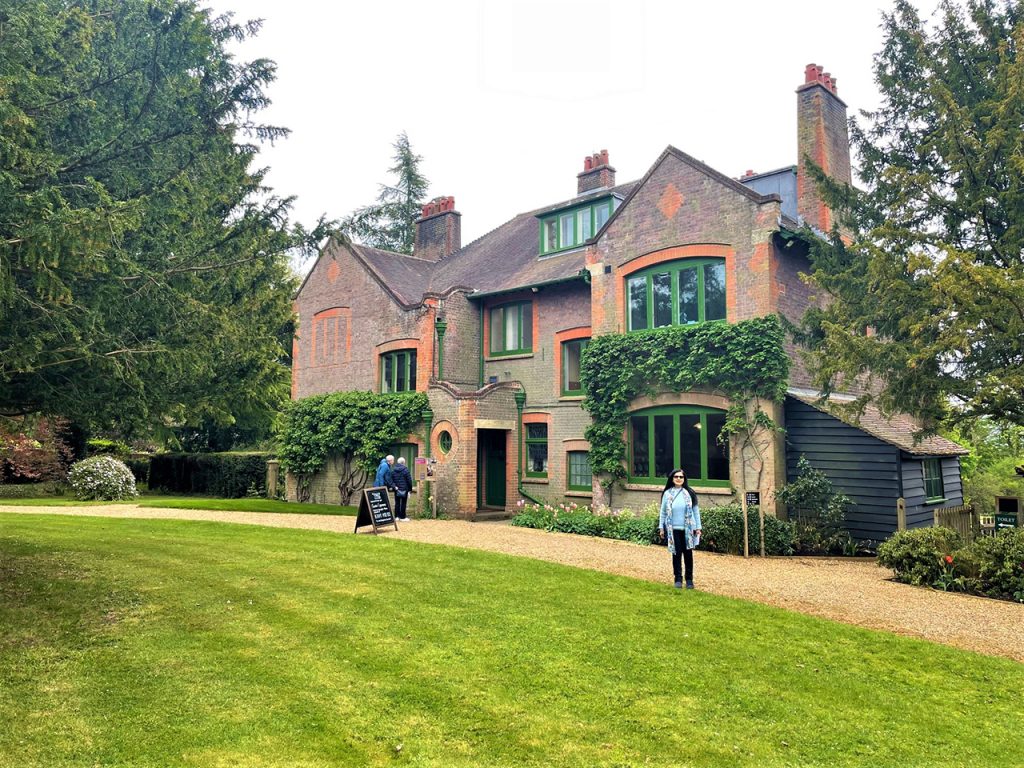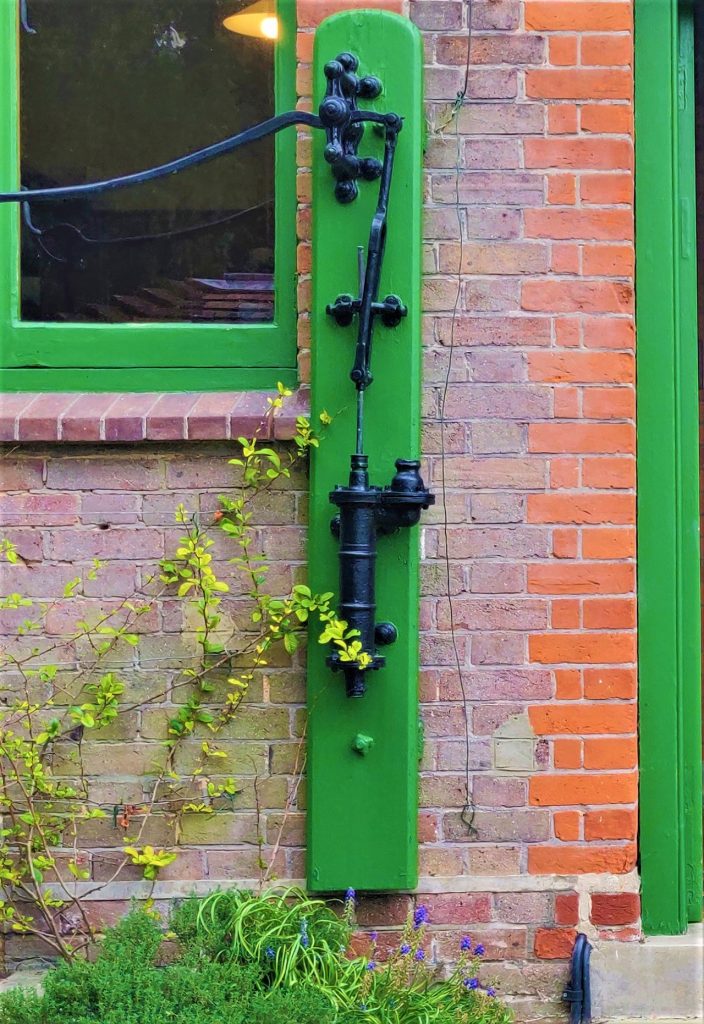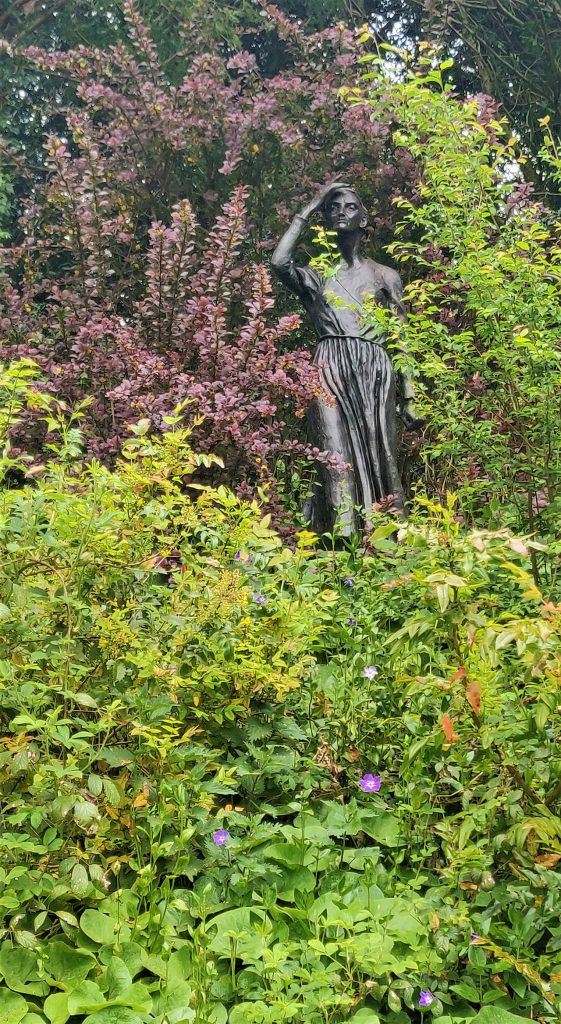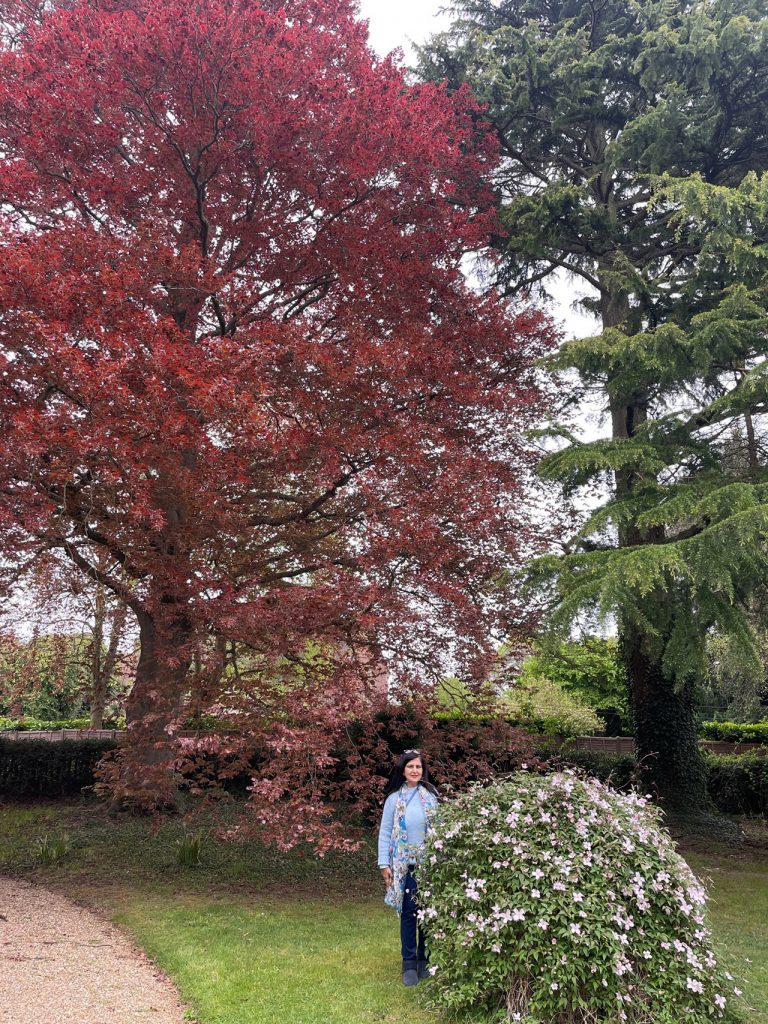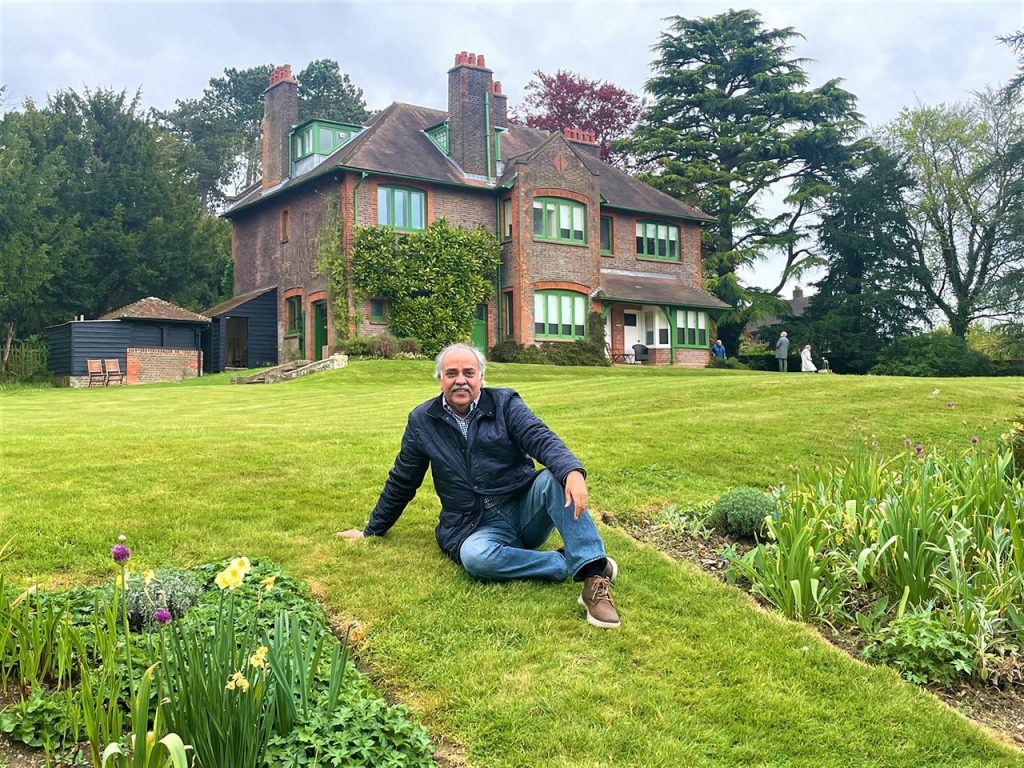From Pygmalion to Pretty Woman- George Bernard Shaw Garden & Woodland
Driving on a tree lined narrow English country road with backdrop of vast green openness we reached the house of the celebrated Anglo- Irish playwright & socialist George Bernard Shaw who continues to attract readers, visitors and film makers till today.
We were at Shaw’s Corner in England- the home to Shaw and his wife Charlotte. From composing popular play like Pygmalion in 1913 that inspired famous movies- Pygmalion 1938, My Fair Lady 1964 and Pretty Woman 1990 to the Literary Nobel Prize in 1925; Shaw’s achievements were multiple. On the other hand, he supported Gandhi’s non-violent movement in pre independent India and even Nehru was his admirer who visited his home – Shaw’s Corner. Further we were keen to look out for Indian paintings and artefacts embellishing the simple Shaws home.
From a Rented House to a Home
Past serene green environment and tulip beds of unique colours- orange to maroon we caught the first view of the Shaw’s-Corner brick house, initially a Vicarage. In the Time machine I found myself in the November of year 1906 and saw the middle-aged Shaw couple move into this rented house ‘for a while’ till they eventually purchased it in 1920. He loved his privacy and the villagers of Ayot St Lawrence, grew to love and accept his eccentricities! He was a staunch Socialist as he believed Capitalism to be the cause of poverty. Alongwith the world of theatre, he had connections with artists, politicians, academic-elite and royalty.
Success in London- a Recall
Whilst in the front garden of the Shaw’s Corner I recollected reading earlier that growing up in the Irish slums his love for music and grit to self- educate by visiting the National gallery and British museums, rescued George Bernard Shaw-GBS, after he moved to London. The late 1800’s were a period of conception of Intellectual- clubs and Societies and soon GBS earned the name of ‘Platform Spellbinder’ as he spoke so well! Rapidly he received realization in Theatre and Literary work as his presentations were so varied from the traditional Victorian style of theatre. GBS decided to accept the marriage proposal of Charlotte Payne-Townshend in 1898, only after the success of his play Devil’s Disciple in America as she was a wealthy Irish heiress. One incident from 1904 that I remembered reading was that of King Edward, who laughed so much that his chair broke while watching a GBS play- John Bull’s Other Island.
Outside Shaw’s Corner
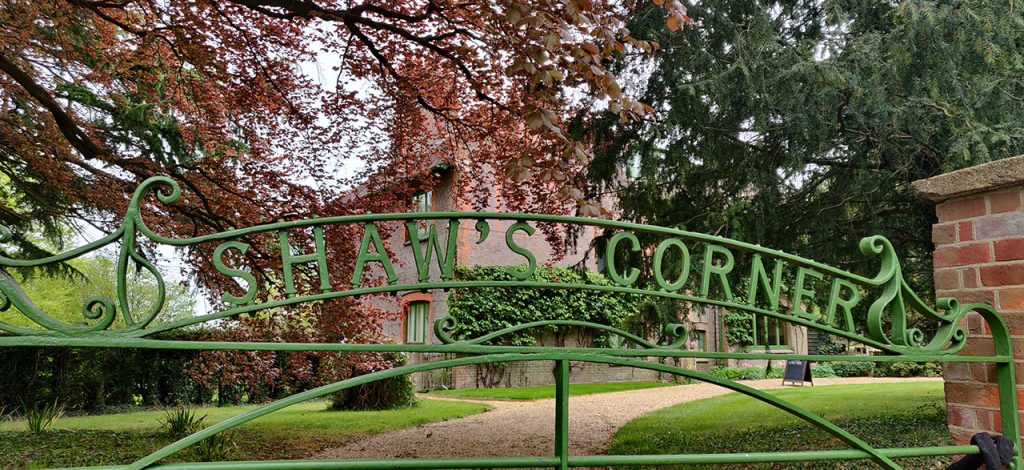
‘A prisoner in his own house’ caption on a photo depicting George Bernard Shaw standing behind the wrought-iron sign of Shaw’s Corner
Awaiting our group guide we decided to explore the outside of the Shaw’s Corner. We noticed a cluster of photos on a board, one of which has a particularly interesting caption- ‘a prisoner in his own house’ with George Bernard Shaw standing behind the wrought-iron sign of Shaw’s Corner, as seen in the my photographs too. Next we headed for the lush green gardens behind the home.
We moved past a well maintained 19th century Well House and Pump room with Hand pump on the other side remembering that Shaw’s Corner was the first house in the village to acquire plumbing for water-supply in addition to electricity.
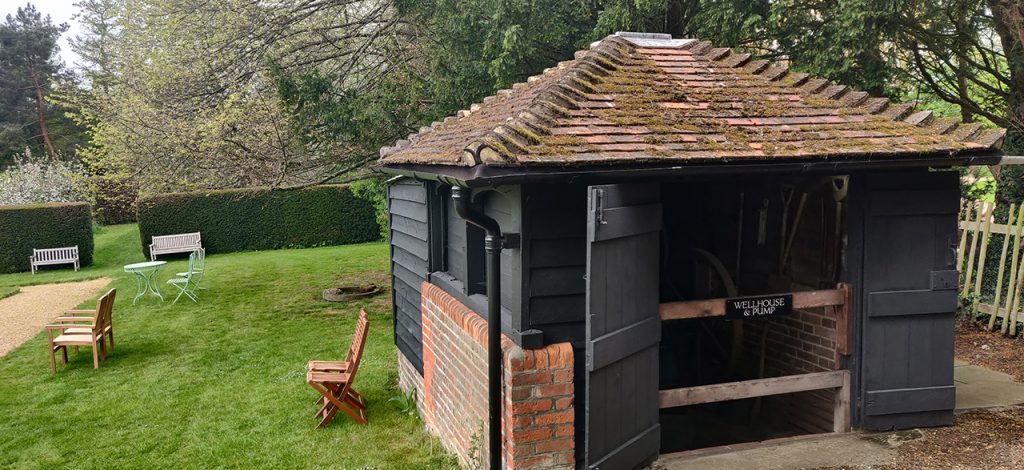
Past a well maintained 19th century Well House and Pump room with Hand pump on the other side remembering that Shaw’s Corner was the first house
Shaw’s famous Writing Hut
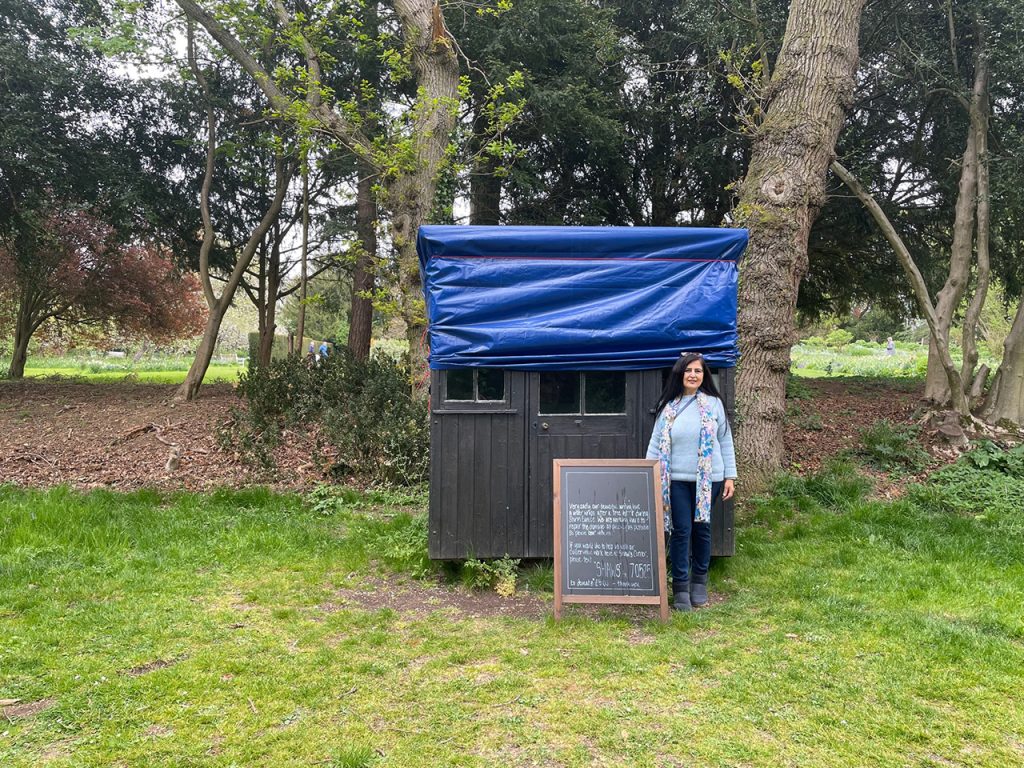
George Bernard Shaw’s favourite revolving Writing Hut in the garden where finally his ashes were scattered.
Shortly, we arrived at the famous Shaw’s Writing Hut where he wrote more than 50 plays and key-works like Pygmalion, Man & Superman and Saint Joan, for this was his hiding spot away from visitors for peaceful writing! We peeped in through the glass windows to see Shaw’s original typewriter and the telephone that connected him to the main house.
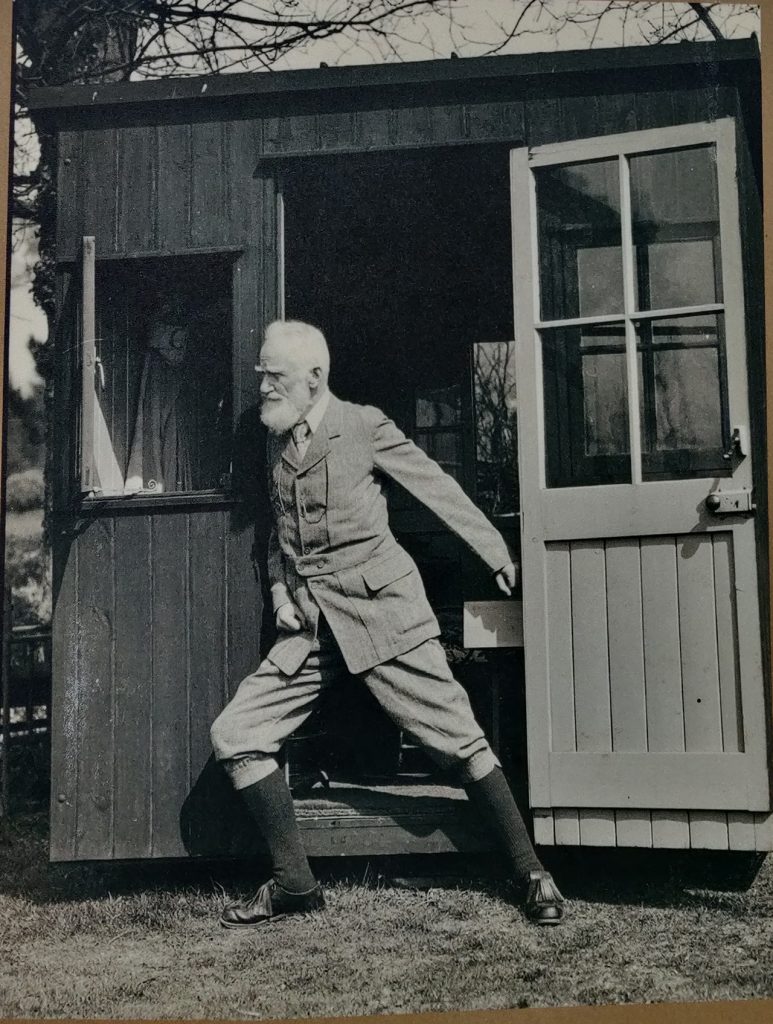
George Bernard Shaw showing his annoyance to those who disturbed him while he worked in the Writing Hut.
We were impressed to know that it was wired for electricity and heating too even in that era. The original chair and more items had been removed when a tree fell on the Writing Hut’s roof during the recent Storms in February 2022 was under repair by the National Trust that is certainly keeping the gardens beautifully maintained.
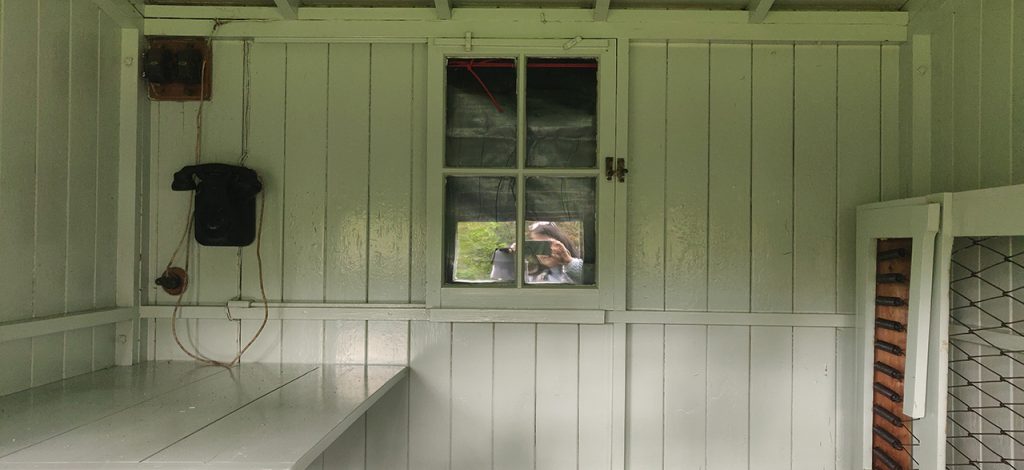
The inside of the Writing Hut where Shaw wrote most of his famous plays. Most items have been removed during repair except Shaw’s Intercom to co
This would have been his wife Charlotte’s Summer home that had been designed as a revolving Hut to change views or follow sun’s direction which instead became GBS’s legendary Writing Hut! The surrounding emerald woodland lend complete serenity to the space.
Saint Joan at Dell
Subsequently we started walking back towards the house passing the splendid verdant greenery of an area marked the Dell on a mound whose highlight is the beautiful statue of Saint Joan created as an admiration to Shaw’s play Saint Joan. The play is based upon the life of the 15th century French military character and sacred martyr Joan of Arc, staged in 1923. We climbed up to the statue from one side and came upon orchards where different fruits like apples, pears, plums, cherries, walnuts and hazelnuts were planted in different months.
The garden-map mentioned that GBS chronicled garden lay outs, plants and flowers in over 15000 photographs that were stored in the London School of Economics!
The Verandah- the Riviera
Ensuing this, we headed for the house and stopped by at the Verandah that ran along the length of the back of the house. Once a hub of activity when the Shaw couple entertained their theatre, political & artist friends here and was labelled –The Riviera. Again attention-grabbing photographs had been displayed here especially that of an older graceful Charlotte in comparison to the young beautiful Charlotte in the front of the house. One could sit on the Verandah chair to step into the Time machine to watch guests enjoying the picture-perfect garden visuals- grass, shrubs, wildflower-meadow and semi- woodland trees in the distance. Not to be missed is the Mulberry tree planted by GBS with allusion to playwright William Shakespeare also having a similar tree!

Visitor sitting in the historic Verandah used for entertaining famous artists, politicians and writers. Also visible are the vitaglass Bay window
Bay windows had been created on both sides of the Verandah with special Vitaglass to have view of the Drawing room and Study displaying unique artefacts, furniture and paintings adding to the beauty of the area.
Admiring the sculptures of a dog and lamb by Russian artist Troubetzkoy in the South Terrace of the garden I recalled reading that the Shaw couple’s favourite exercise was walking and they kept pebbles in the windows to remember number of laps they made!
Au Revoir
Noticing the time we headed for tour of the house- the Shaw’s Corner and turned around to look at the Writing Hut and the bottom of the beautiful garden where the ashes of George Bernard Shaw and his wife Charlotte had been mixed and scattered as per his last wishes!
Photo Courtesy
Arvind Chopra.
